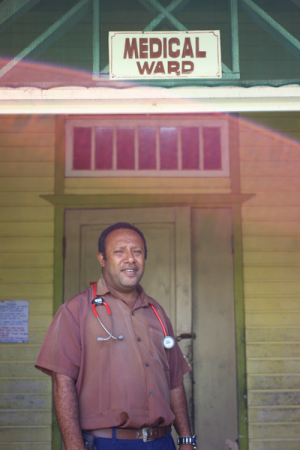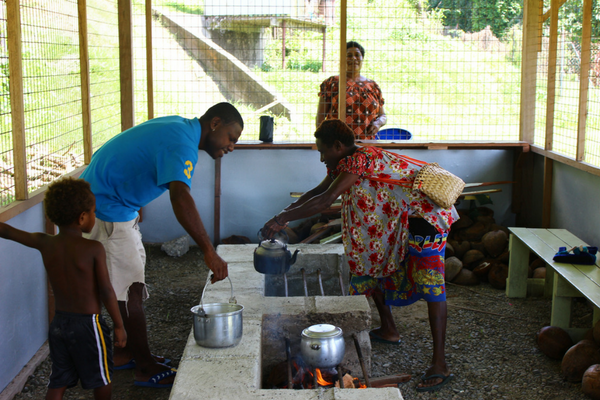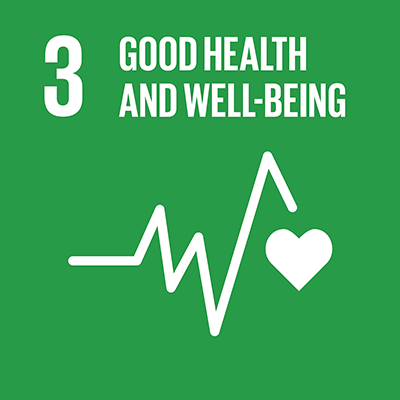27.06.2018 - With government health services thin on the ground in Papua New Guinea, volunteers and NGOs step up to fill the gaps. This article was published in the October 2014 edition of Vista magazine. Since then, Dr David Jones also volunteered with VSA, and we are recruiting another doctor to support the hospital.
St Mary’s Hospital in Kokopo, East New Britain, Papua New Guinea, has bed space for 190 patients. About 2,500 babies are delivered there each year. The hospital provides ante- and
postnatal care; general medical and surgical services; outreach to isolated communities in the province; and outpatient services. Earlier this year, a measles outbreak saw 12,800 patients treated over two months at St Mary’s. Another outbreak, this time of the mosquito-borne disease chikungunya, caused more than 1,000 patients to seek treatment, waiting until 10.00 or 11.00 at night to be treated.
Right now, St Mary’s has just one doctor.

Dr Felix Diaku
VSA volunteer Dr Tim Fletcher has just finished his two-year assignment at St Mary’s, alongside his counterpart, general surgeon Dr Felix Diaku. A third doctor, a German volunteer obstetrician, is on leave and will rejoin St Mary’s soon but until then, Tim says, “When I’ve gone, Felix is going to be here on his own.”
Dr Diaku has an ovarian cyst to operate on later in the morning when we visit St Mary’s, but joins Tim to give us the grand tour of the hospital grounds. “If it gets busy”, Tim says, “they’ll have to run a scaled-back operation and send more patients to Nonga. “ (Nonga is the next nearest hospital.) “Or”, jokes Dr Diaku, “don’t get sick in Kokopo!”
The doctor shortage in Papua New Guinea is chronic, Dr Diaku explains. There is only one medical school in the country, in Port Moresby. The average first-year intake is just 40-50 students. As Tim points out, Papua New Guinea’s population is predicted to double by 2035.
St Mary’s is part of the Catholic Archdiocese of Rabaul (CADR), which has been a VSA partner organisation for a decade. In that time, nearly 20 volunteers have worked with CADR across its services. Another volunteer doctor has been recruited by VSA to replace Tim and should arrive later this year, but Tim will be missed. In the maternity ward, head midwife Sister Maria says of Tim, “he’s a nurses’ doctor – can you get him back?”
In the first year of Tim’s assignment, the mortality rate for children at the hospital halved, due to Tim’s leadership in following good protocols. Before going to Papua New Guinea, he was practising as a GP in Rotorua, but undertook a course on tropical medicine in London before taking up his assignment. His specialty at St Mary’s has been tuberculosis: Papua New Guinea has the highest rate of TB in the Pacific. The emergence of a multi-drug resistant strain has compounded the problems of medicine shortages and access to treatment for remote communities. St Mary’s has two TB wards – one for patients who are not contagious, and an isolation room for those who are. Tim oversaw the installation of mosquito nets for TB patients – malaria and TB are a bad mix, and hospitals are high-risk places for contracting malaria, as mosquitos bite infected patients then transmit it to others.
The problem with TB, Tim says, is while it’s treatable, it requires a long drug course. Patients will start to feel better and stop taking the drugs, causing it to relapse and become resistant to the drugs. He said he’s heard calls for all TB patients to be hospitalised until they’ve completed months of treatment, “but the country doesn’t have enough hospital
beds for that.”
Right now, the hospital is fairly quiet, in contrast to two months ago when “every bed was full” during the measles outbreak. Dr Diaku says they think they can trace the outbreak back to breaks in the vaccination programme due to volcanic eruptions in Rabaul – Mt Tarvurvur and Vulcan destroyed 80% of Rabaul in 1994 and Mt Tarvurvur erupted again in 2006. The regions affected by the eruptions are the regions the measles was prevalent, Dr Diaku says.
The day after we visited, Mt Tarvurvur erupted again, blanketing areas to the west of Rabaul and Kokopo with ash.
Everywhere around the hospital, there are signs of where NGOs and other donors have worked to alleviate the PNG government’s healthcare shortages. The mosquito nets in the TB, paediatric and baby wards have been donated. The artwork in the paediatric wards was another donation – Simba, Spider Man and Mickey Mouse adorn the walls, except in the Intensive Care ward, where the murals are all religious iconography, a comfort to parents in their worst hours.
Esther, who is five years old, is the only patient in the Intensive Care ward, and has been there some time. She is listless, skin and bone, and both her parents are at her bedside.
Tim says that as anyone who’s spent time in hospital knows, family support is a massive part of recovery. That is even more true here, where patients rely on family for everything not immediately medical – including food.
The hospital’s old family kitchen (‘haus kuk’) had been transformed into a meeting room and offices, leaving patients and their families nowhere to prepare food. Locals could cook at home, Tim says, “but there were a small number coming from a long way off with no families.” There’s a charity-funded kitchen that feed eligible patients, but not their families, which “is a problem for breastfeeding mothers.”

The new haus kuk in action.
The week before our visit, a new haus kuk was opened, thanks to a donation from Tim’s family. It’s a simple place, with open fires for cooking and a stack of firewood and coconut husks, set at the back of the hospital grounds. Tim is thrilled to see a family preparing food – it’s the first time he’s seen it used. A family with a young boy have a stack of greens, kaukau (kumara) and some coconuts; there are pots full of water boiling over the fire.
Tim snaps pictures to take home with him, delighted to see it in use. A family doctor, through and through.


